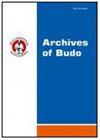年轻柔道运动员在不稳定设备上进行阻力练习时肌肉输出的变化:一个案例研究
IF 1.5
3区 医学
Q3 SPORT SCIENCES
引用次数: 2
摘要
BackgroundResistanceexercisesunderunstableconditionshavegainedpopularityamongathletes。该研究的目的是“调查在不稳定条件下的上蹲和下蹲期间肌肉输出的变化”(峰值功率和运动速度),并将其与稳定条件下的输出进行比较。参与者:��Atotalof 20��,�dividedintotwogroups,�tookpartinthestudy。�Thefirstgroupconsistedof�9�top-lev——elyoungmalejudoists�whilethesecondgroupconsistedof 11��学生。��Alloftheexerciseswereperformedonce�70% ofone-repetitionmaximum�(1 rm)�wasdetermined。结果:分析显示,与稳定条件下的柔道运动员相比,在不稳定条件下下蹲时(“BOSUball”)肌肉输出显著减少。然而,在不稳定的条件下,与平台式相比,在压力下的肌肉输出没有明显的减少(瑞士球)。,��Forthegroupofstudents theanalysisshowedasignificantreductioninmuscularoutputsduring�thebenchpressunderunstableconditionswhencomparedtothestableflatbench。�另外,�forthisgroupthe�muscularoutputsweresignificantlylowerduringsquatsunderunstableincomparisontostableconditions。结论:在减少训练负荷的情况下,在柔道运动员身上进行的杠铃阻力训练不能作为一种有效的训练模式。然而,在不稳定的条件下,训练负荷减少的训练为神经肌肉系统提供了足够的挑战,可以纳入训练计划。本文章由计算机程序翻译,如有差异,请以英文原文为准。
Changes in the muscular outputs of young judoists during resistance exercises performed on unstable equipment: A case study
BackgroundResistanceexercisesunderunstableconditionshavegainedpopularityamongathletes.�Theaimofthestudywas� toinvestigatethechangesinmuscularoutputs�(peakpowerandvelocityofmovement)�duringbenchpressesand� squatsunderunstableconditionsincomparisontotheoutputsunderstableconditions. �:� Atotalof�20�participants,�dividedintotwogroups,�tookpartinthestudy.�Thefirstgroupconsistedof�9�top-lev- elyoungmalejudoists,�whilethesecondgroupconsistedof�11�students.�Alloftheexerciseswereperformedonce� 70%�ofone-repetitionmaximum�(1RM)�wasdetermined. � Results:� Theanalysisshowedasignificantreductioninmuscularoutputsduringsquatsunderunstableconditions�(the� BOSUball)�incomparisontostableconditionsforthegroupofjudoists.�However,�therewasnosignificantreduc- tioninmuscularoutputsduringthebenchpressesunderunstableconditions�(theSwissball)�comparedtothesta- bleflatbench.�Forthegroupofstudents,�theanalysisshowedasignificantreductioninmuscularoutputsduring� thebenchpressunderunstableconditionswhencomparedtothestableflatbench.�Inaddition,�forthisgroupthe� muscularoutputsweresignificantlylowerduringsquatsunderunstableincomparisontostableconditions. � Conclusions:� ThebenchpressasaresistanceexerciseperformedonaSwissballwithreducedtrainingloadcannotberecom- mendedasaneffectivetrainingmodelforjudoists.�Nevertheless,�thesquatwithreducedtrainingloadunderun- stableconditionsprovidedsufficientchallengestotheneuromuscularsystemandcouldbeincorporatedintotrain- ingprograms.
求助全文
通过发布文献求助,成功后即可免费获取论文全文。
去求助
来源期刊

Archives of Budo
SPORT SCIENCES-
CiteScore
2.80
自引率
47.60%
发文量
0
审稿时长
>12 weeks
期刊介绍:
Archives of Budo is an international peer reviewed journal publishing articles on various aspects of the sports sciences covering education and research in martial arts and combat sports, and related areas like biomechanics, kinesiology, medicine, psychology, sociology, technologies of sports equipment, research in training, selection, performance, survival, and other interdisciplinary perspectives.
Archives of Budo editors endorse the principles embodied in the Helsinki Declaration and expect that all research involving humans has been performed in accordance with these principles. All human studies must have been approved by the investigator''s Institutional Review Board. A copy of the relevant documentation should be included with the manuscript. Furthermore Archives of Budo follows the ICMJE''s Recommendations for the Conduct, Reporting, Editing and Publication of Scholarly Work in Medical Journals.
Archives of Budo provides free, immediate and permanent online access to the full text of all articles distributed under the terms of the Creative Commons Attribution Non-commercial License http://creativecommons.org/licenses/by-nc/4.0), which permits use, distribution, and reproduction in any medium, provided the original work is properly cited, the use is non-commercial and is otherwise in compliance with the license.
 求助内容:
求助内容: 应助结果提醒方式:
应助结果提醒方式:


